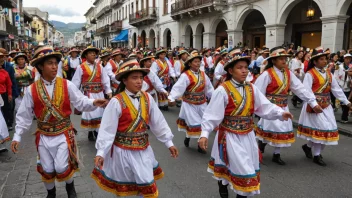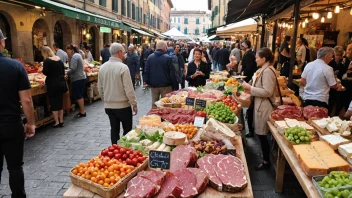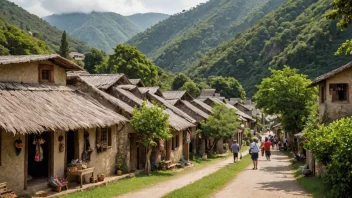Introduction
The Roma, also known as Romani or Gypsies, possess a rich tapestry of traditions that reflect their unique cultural identity. In this guide, you will learn how to appreciate and engage with the traditions of the Roma across various European countries. From music and dance to culinary delights and crafts, this article will provide you with a step-by-step approach to immerse yourself in their vibrant culture.
Step 1: Understand the History of the Roma
Before diving into the traditions, it's essential to grasp the historical context of the Roma people. Originating from northern India, they migrated to Europe over a thousand years ago. Today, they are a diverse group with various sub-groups, including the Rom, Sinti, and Kalderash.
- Research their migration patterns: Explore how the Roma spread across Europe, facing discrimination and challenges.
- Learn about their language: Familiarize yourself with Romani languages, which vary by region.
Step 2: Attend Festivals Celebrating Roma Culture
One of the best ways to experience Roma traditions is through their festivals. These events often showcase their music, dance, and culinary specialties.
- Research local festivals: Look for festivals such as the Romani Festival in Hungary or the International Romani Day celebrated across Europe.
- Participate actively: Join in the festivities, whether it’s dancing to live Roma music or tasting traditional dishes.
Step 3: Explore Roma Music and Dance
Music and dance are integral to Roma culture. Engaging with these art forms will enhance your understanding of their traditions.
- Listen to traditional Romani music: Explore genres like Flamenco in Spain, Gypsy Jazz in France, and Lautari music in Romania.
- Take a dance class: Enroll in workshops to learn popular Roma dances such as Taraf or Csárdás.
Step 4: Experience Roma Cuisine
Food is a crucial aspect of the Roma lifestyle, often reflecting the local ingredients and traditions of the regions they inhabit.
- Try traditional dishes: Sample meals like Sarmale (cabbage rolls) in Romania or Goulash in Hungary.
- Attend cooking classes: Learn to prepare Roma dishes under the guidance of local chefs.
Step 5: Discover Roma Arts and Crafts
The Roma are known for their intricate craftsmanship, which includes everything from jewelry to textiles.
- Visit local markets: Explore markets where Roma artisans sell handmade crafts, providing a glimpse into their skills.
- Participate in workshops: Sign up for workshops to learn about traditional crafts like weaving or metalwork.
Step 6: Engage With the Community
Building relationships with the Roma community can provide insights that books and documentaries cannot.
- Volunteer with Roma organizations: Engage with community projects that support Roma rights and culture.
- Attend community gatherings: Participate in local events to foster understanding and respect for their traditions.
Step 7: Respect Cultural Sensitivities
As with any culture, it is vital to approach the Roma traditions with respect and understanding.
- Avoid stereotypes: Refrain from generalizations that perpetuate negative stereotypes about the Roma.
- Be open-minded: Embrace their customs, even if they differ from your own cultural norms.
Conclusion
Through this guide, you have learned how to appreciate and engage with the traditions of the Roma in Europe. By understanding their history, attending festivals, enjoying their music and dance, experiencing their cuisine, discovering their arts, engaging with the community, and respecting their cultural sensitivities, you can foster a deeper understanding of this vibrant culture. Remember, the key to truly appreciating the Roma traditions lies in your willingness to learn and immerse yourself in their world.






